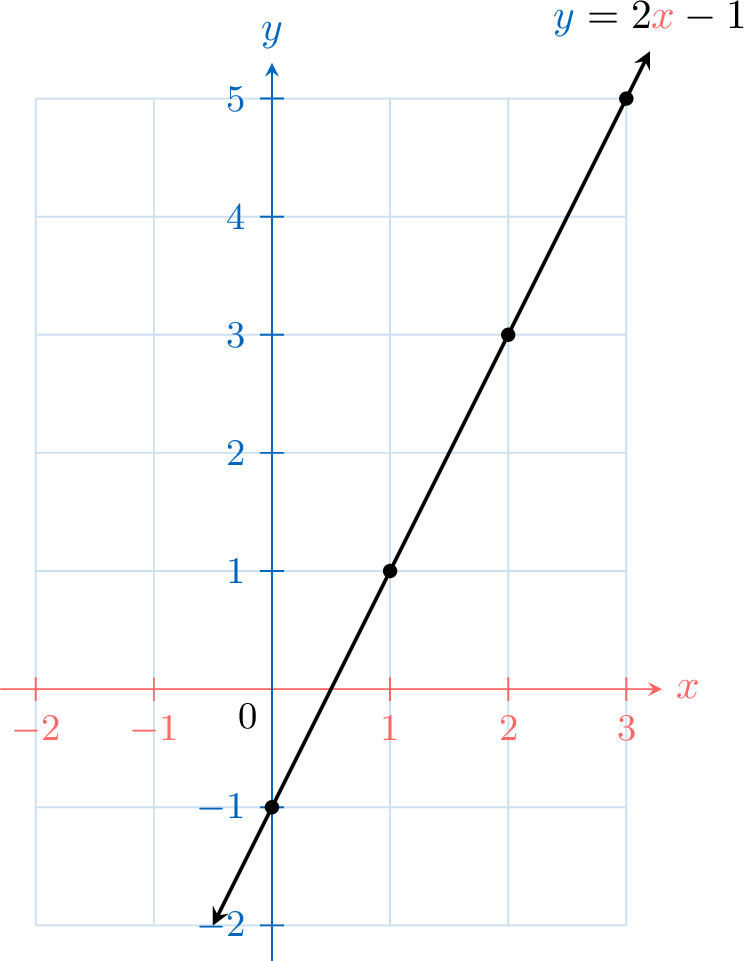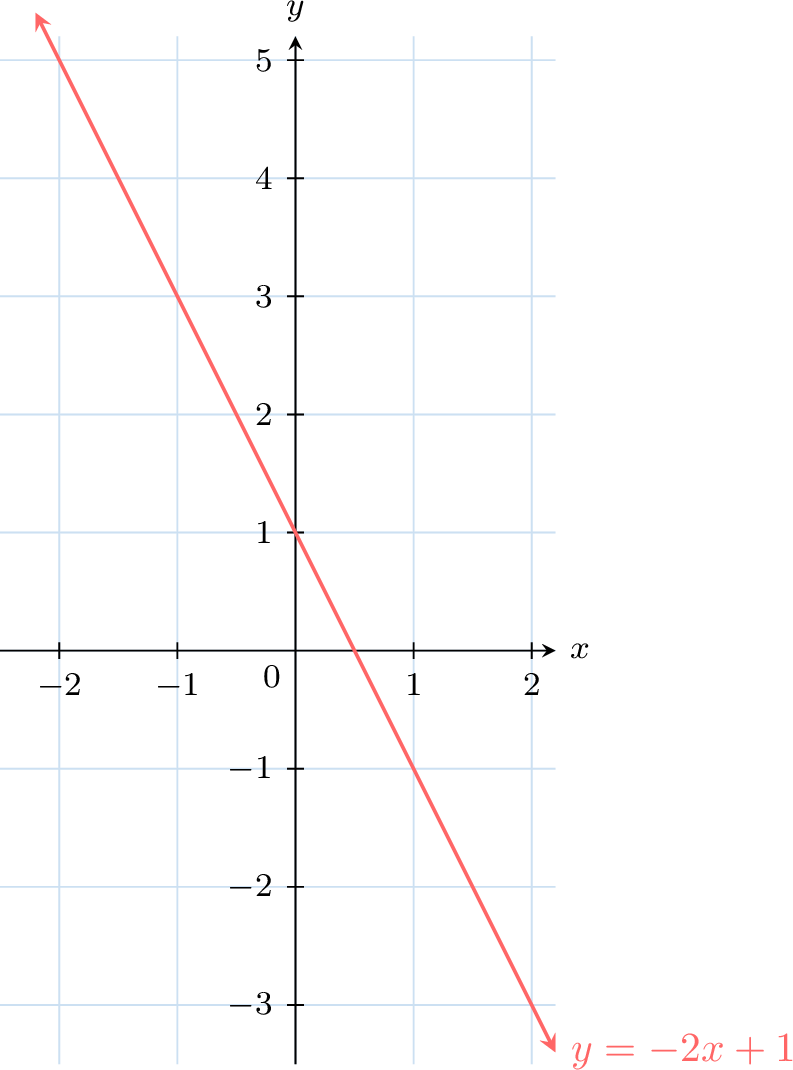Line Equations
Definition
Consider the equation \(\textcolor{colorprop}{y}=2\textcolor{colordef}{x}-1\), which describes the relationship between two variables \(\textcolor{colordef}{x}\) and \(\textcolor{colorprop}{y}\).
For any given value of \(\textcolor{colordef}{x}\), we can use the equation to find the corresponding value of \(\textcolor{colorprop}{y}\). These values give coordinates \((\textcolor{colordef}{x}, \textcolor{colorprop}{y})\) of points on the graph.
In fact, there are infinitely many points that satisfy \(\textcolor{colorprop}{y}=2 \textcolor{colordef}{x}-1\), forming a continuous line extending indefinitely in both directions (indicated with arrowheads).
For any given value of \(\textcolor{colordef}{x}\), we can use the equation to find the corresponding value of \(\textcolor{colorprop}{y}\). These values give coordinates \((\textcolor{colordef}{x}, \textcolor{colorprop}{y})\) of points on the graph.
- For \(\textcolor{colordef}{x} = \textcolor{colordef}{1}\):$$\begin{aligned}[t]\textcolor{colorprop}{y} &= 2\times \textcolor{colordef}{1} - 1 \\ &= \textcolor{colorprop}{1}\end{aligned}$$
- For \(\textcolor{colordef}{x} = \textcolor{colordef}{2}\):$$\begin{aligned}[t]\textcolor{colorprop}{y} &= 2\times \textcolor{colordef}{2} - 1 \\ &= \textcolor{colorprop}{3}\end{aligned}$$
| \(\textcolor{colordef}{x}\) | \(\textcolor{colordef}{0}\) | \(\textcolor{colordef}{1}\) | \(\textcolor{colordef}{2}\) | \(\textcolor{colordef}{3}\) |
| \(\textcolor{colorprop}{y}\) | \(\textcolor{colorprop}{-1}\) | \(\textcolor{colorprop}{1}\) | \(\textcolor{colorprop}{3}\) | \(\textcolor{colorprop}{5}\) |
In fact, there are infinitely many points that satisfy \(\textcolor{colorprop}{y}=2 \textcolor{colordef}{x}-1\), forming a continuous line extending indefinitely in both directions (indicated with arrowheads).

Definition Equation of a line
The equation of a line can be written as:$$y = mx + c$$where \(m\) is the slope and \(c\) is the \(y\)-intercept.
Example
